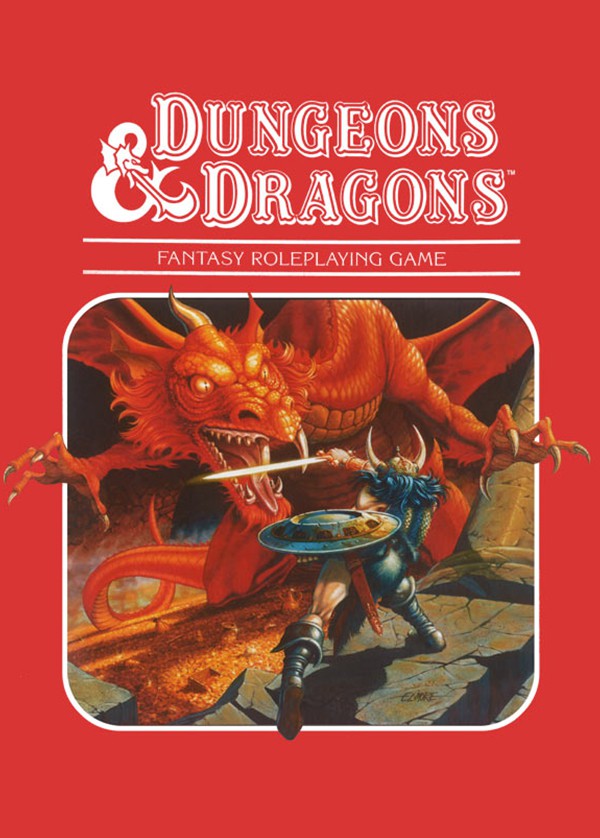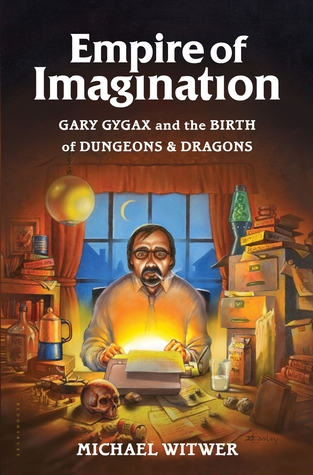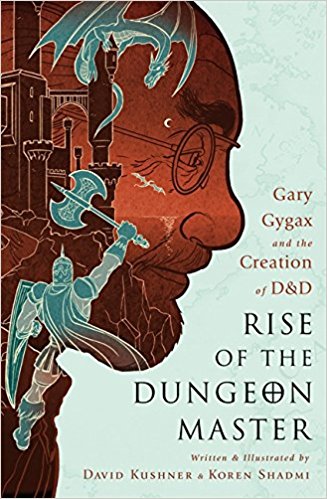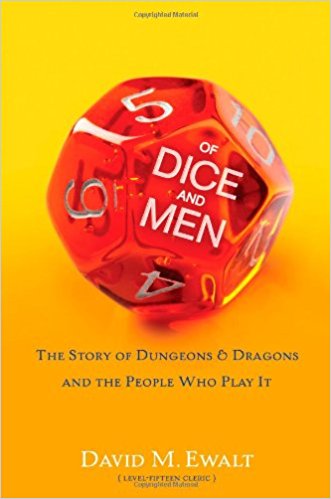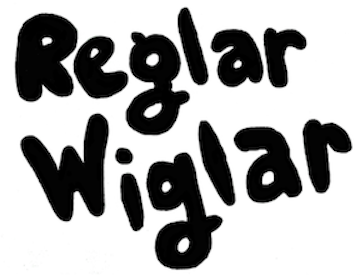Three on D&DReviewed by Chris Auman
I guess you could say I was a nerdy kid. A geek perhaps. I know there are differences. Growing up in the 80s, I was into model rockets and fantasy novels and, of course, Dungeons and Dragons. I’m not sure when D&D first entered my consciousness, but sometime in the early 80s, when I was about 12 or 13, I was introduced to the game by a kid named Anton, the son of my parent’s friends. One night when their family invited ours over for dinner, Anton gave me a brief rundown on how to play this role-playing game called Dungeons & Dragons. He showed me how to create a character by choosing a name, class and alignment and then roll the dice to determine the characters abilities. He explained to me the role of the Dungeon Master in controlling the game’s events. Anton had the funky dice, the little lead figures of goblins and elves and the manuals and modules. I went home that night with none of those things. The next day, only partially educated by Anton's brief tutorial, I enlisted a few neighborhood friends and we began playing our own corrupted version of D&D. We used a set of 6-sided dice cribbed from my sister’s Yahtzee game. With the addition of a pencil and a few sheets of scratch paper for character sheets and maps, and with myself self-appointed as Dungeon Master, we were ready to roll on some orcs and trolls. And that’s the beauty of the game. You don't have to buy anything. Not really. You don’t need an MBA to realize that’s not a sound business model, but TSR, the game’s publisher, made a mint in spite of themselves. And of course, I eventually did buy whatever tools of the trade I could afford; graph paper, lead figures, the many-sided dice, modules, et cetera, but when I couldn't afford the expensive Monster Manual TSR sold, I created my own. As I happily played D&D and read J.R.R. Tolkien, Lloyd Alexander, and Stephen R. Donaldson, Gary Gygax was already in financial trouble with the gaming company he co-founded. The history of D&D and TSR, based just north of me over the border in Geneva, WI, was unknown to me. I have been just recently educated through an unrelated series of books on the subject of the game, its co-creators and the main force behind it, Gary Gygax.
Empire of Imagination: Gary Gygax and the birth of Dungeons & Dragons Michael Witwer Michael Witwer's Empire of Imagination tells Gygax’s story from cradle to grave. Gygax (it's a Swiss surname, in case you're curious) grew up on Chicago's north side before his family moved to his mother's home town of Lake Geneva. This Wisconsin town had provided an escape for Chicagoans since the Prohibition days. It was here in this placid small town that young Gary was free to explore the underground tunnels and buildings of an abandoned sanitarium with his friends. As a young man he become an avid war gamer, which used the small figurines now synonymous with the game he would some day help create. Gygax was a stickler for gaming rules, and not the greatest business man which created no small bit of tension with his partners and employees of TSR the game publishing company he started with Dave Arneson and his childhood friend Don Kaye. Gygax would eventually lose control over his company, get divorced, and move to Hollywood where he would try to make it as a big shot producer. He would never tire of games, creating them or talking about them. There's no doubt Gygax had stumbled upon a multi-million dollar idea. Without the help, or intervention of others along the way, however, he and his friends would likely have lived out their lives playing some version of the game in their basements. If you've ever played the game, or are just curious about how it all started, this is a good place to start.
Rise of the Dungeon Master: Gary Gygax and the Creation of D&D David Kushner, Illustrated by Koren Shadmi Rise of the Dungeon Master is the graphic novel version of the D&D story. Due to the format, it is the simplified version—the Cliff Notes, if you will. Told in the second person point of view, as the game itself is narrated by the Dungeon Master, Kushner’s tale skips many of the details that made Empire of Imagination so interesting, but, if have a little time between your own D&D campaigns, it’s worth the hour or so it might take you to learn about this culturally-influencial and highly addictive role-playing game.
Of Dice and Men: The Story of Dungeons & Dragons and the People Who Play it David M. Ewalt Of Dice and Men is a humorous take and informative look at the D&D phenomenon from a player’s perspective. The intended audience, however, is non players, but D&D enthusiasts will find plenty to enjoy, and purists will find plenty to be annoyed by. The books covers much of the same ground as Empire of the Imagination and Rise of the Dungeon Master but does so with a tongue in cheek and self-deprecating intent. There's also a little more focus on the cultural affects of the game including the Mazes and Monsters made-for-tv movie (staring a young Tom Hanks) and the real life story behind it. If there is such a demographic as nonRPG players interested in stories, trivia and whatnot about Dungeons and Dragons, this is a quick and entertaining way to get up to speed on the game and its influence on the culture. Read more book reviews WIZZYWIG by Ed Piskor Moving Target: The History and Evolution of Green Arrow by Richard Gray The Art of Atari by Tim Lapetino |
|---|
|
|


